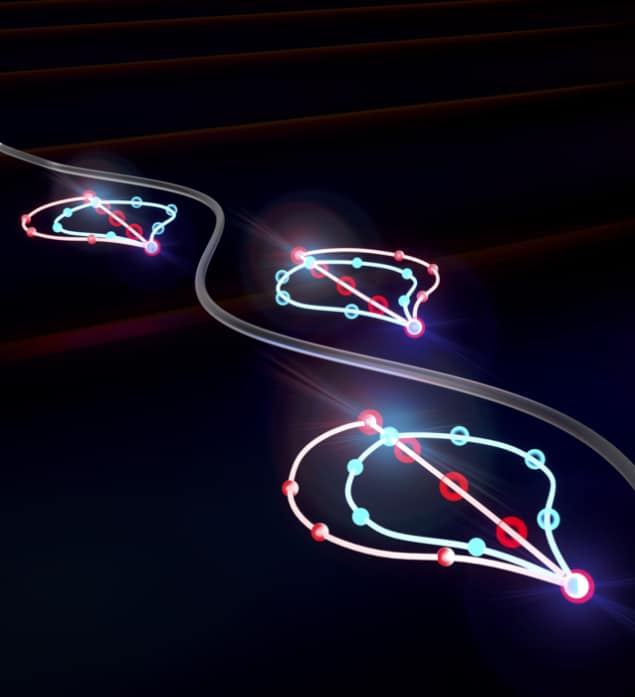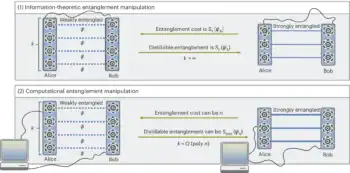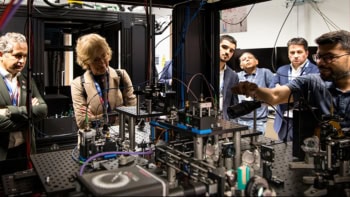
Researchers at the University of California at Santa Barbara in the US have reconstructed a representation of the electron’s wave nature – its Bloch wavefunction – in a laboratory experiment for the first time. The work could have applications in the design and development of next-generation electronic and optoelectronic devices.
Like all matter, electrons behave as both particles and waves. One of the main goals of condensed-matter physics is to understand how the wavelike motion of electrons through periodically-arranged atoms give rise to the electronic and optical properties of crystalline materials. Having such an understanding is especially important when designing devices that take advantage of the electron’s wavelike nature, explains Joseph Costello, who co-led the UC Santa Barbara team together with Seamus O’Hara, Mark Sherwin and Qile Wu.
The electron’s wavelike motion is described mathematically by a so-called Bloch wavefunction. Named after the 20th-century physicist Felix Bloch, who was the first to describe the behaviour of electrons in crystalline solids, these wavefunctions are complex – that is, they have both real and imaginary components. For this reason, the value of an electron’s Bloch wavefunction cannot be measured directly.
Heavy and light holes
Certain physical properties related to the wavefunction can, however, be observed. The UC Santa Barbara team exploited this fact to calculate a system’s Bloch wavefunction from these observable properties.
To do this, the researchers used a powerful free-electron laser to create an oscillating electric field within a semiconductor, gallium arsenide (GaAs), while simultaneously using a low-intensity infrared laser to excite its electrons. Whenever an electron is excited, it leaves behind a positively charged “hole”. In GaAs, Sherwin explains that these holes come in two varieties, heavy and light, that behave like particles with different masses.
The team found that if they created electrons and holes at the right time relative to the oscillations of the electric field, the components of these quasiparticle pairs (known collectively as excitons) would accelerate away from each other, slow down, stop, and then accelerate towards each other before colliding and recombining. At the point of recombination, they emit a pulse of light, known as a sideband, with a certain characteristic energy. This sideband emission contains information about the wavefunctions of the electrons, including their phases – that is, the degree to which the waves are offset from each other.
Because the light and heavy holes accelerate at different rates in the electric field, their respective Bloch wavefunctions acquire different quantum phases before they recombine with the electrons. Thanks to this phase difference, their wavefunctions interfere to produce the final emission, which can then be measured. The interference also determines the polarization of the final sideband, which can be either circular or elliptical (even though the polarization of both lasers is linear to start with).
One free parameter
According to Wu, this simple relation between interference and polarization connects fundamental quantum mechanical theory to a real-world experiment via a single free parameter, which is a number with a real value. This parameter fully describes the Bloch wavefunction of the hole they create in the GaAs, O’Hara adds. “We can acquire this parameter by measuring the sideband polarization and then reconstructing the wavefunctions, which vary based on the angle at which the hole propagates in the crystal,” he explains.

Wave–particle duality quantified for the first time
Before now, researchers have had to rely on theories with many poorly-known parameters, Sherwin adds. “So, if we can accurately reconstruct Bloch wavefunctions in a variety of materials, then that will inform the design and engineering of all kinds of useful and interesting things like lasers, detectors and even some quantum computing architectures,” he says.
The researchers, who report their work in Nature, note that they didn’t immediately realize that the sideband polarization was key to reconstructing the electron wavefunction. They say they would now like to apply their technique to different materials and to exotic quasiparticles other than excitons.



